For most of us, the name Basileios Zacharias, or Basil Zaharoff, doesn’t mean anything. Yet this person left a scar on history with his actions before, during, and after World War I. In his time he had a few nicknames. The press called him “the Mystery Man of Europe,” to his associates he was “Zedzed,” and to those who suffered most from his dealings he was “the merchant of death.”
Operating mostly in the background, Basil Zaharoff worked as a sales agent for a few prominent weapons and ammunition manufacturers. His job sounds fairly straightforward, but with his immoral business methods, he invented a sales technique that carries his name: Systeme Zaharoff. The technique involves selling weapons to both sides in an armed conflict. Zaharoff made a huge fortune while people suffered. It can be said that he is the classic profiteer–one that makes a profit from the loss and suffering of others.
Basil’s road to corruption began in his youth, after his Greek family (he was born in the Ottoman Empire, in the province of Mugla) left Russia. They had previously immigrated there in order to escape the anti-Greek riots in 1821 and adopted a Russian surname. In 1855 they returned to the Ottoman Empire and settled in Constantinople. At some point, Basil started working for the notorious Istanbul firefighters. They purposely set fires and didn’t care as much about extinguishing flames as about recovering the treasures from the houses of the rich who afterward paid them generously for their “services.”

There is not a lot of other information about Zaharoff’s life up until 1872, when his name appeared in Britain in connection with suspicious events. Basil married a girl named Emily Burrows, the daughter of a wealthy merchant from Bristol. The couple decided to go to Belgium, where Zaharoff was at some point arrested and deported to Britain to stand trial. He was charged with embezzling over £7,000, which was a huge amount of money at the time. Somehow, Basil managed to save himself from going to prison, with only a mild punishment and a compensation of £100.
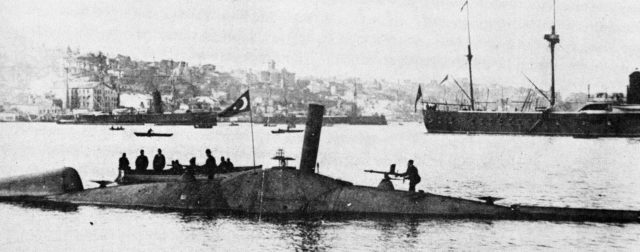
After making some friends in Britain while fabricating (for example, he often introduced himself as Count Zaharoff or Prince Zacharias Basileus Zacharoff), Zaharoff moved to Cyprus, where he posed as a storekeeper and a contractor. A friend recommended him for a position in the arms-manufacturing company of the Swedish inventor Thorsten Nordenfelt, which was then small and not very well known. Zaharoff started working for Nordenfelt in 1877. This was the beginning of his notorious career.
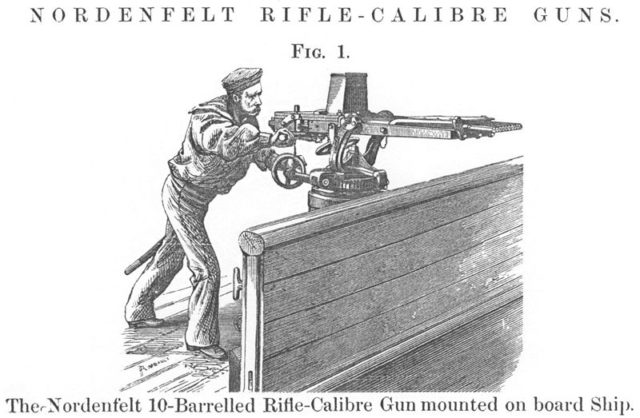
He fell in love with his job, and Basil became the company’s Balkan representative. It seems that arms dealing wasn’t his only occupation. The following year he returned to Britain, and in 1883 he moved to Galway, Ireland. Here, he used his “skills” to persuade young girls to embark a ship and emigrate to the United States, where he fraudulently promised them work in Massachusetts factories.
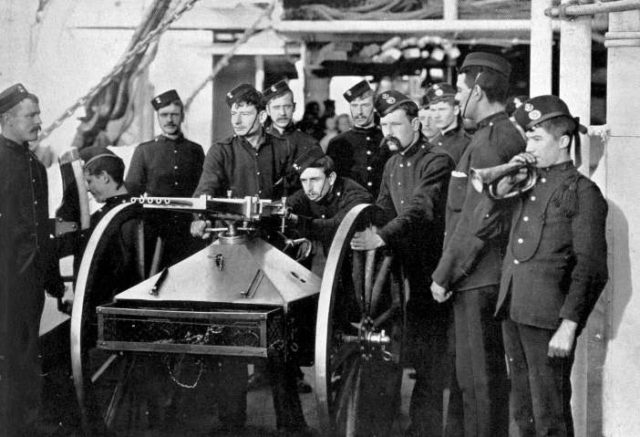
Basil himself moved to the United States after he was chased away by the angry families of Galway. His adventures here were no less criminal. Simply said, the man was a very skillful con artist. Prince Zacharias Basileus Zacharoff, as he called himself for a while, managed to convince a young, wealthy New York woman named Jeannie Billings that he was going to inherit $150,000. He married her for her wealth, but this marriage didn’t last long. He was exposed as a bigamist and forced to escape from the authorities.
In the late 1880s, he returned to the Ottoman Empire and got more deeply involved in selling the Nordenfelt products, which included a multi-barreled machine gun and a steam-powered submarine. These two products were involved in Zaharoff’s most infamous arms dealing ventures.
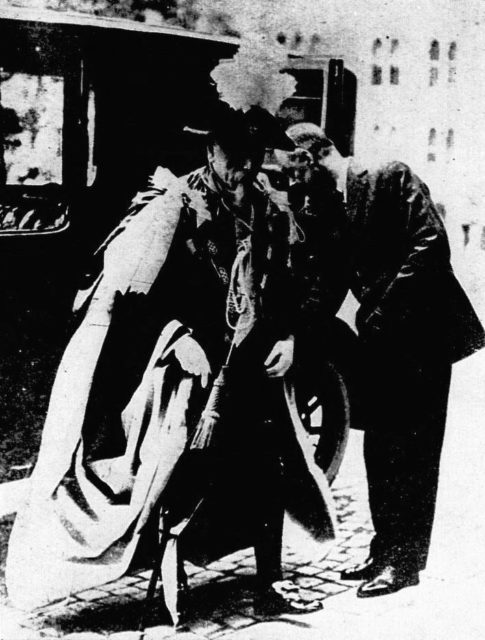
First, let’s explain how he managed to sell impractical steam-powered submarines. The Nordenfelt submarine was based on a design made by an English inventor, the Rev. George Garrett. The Nordenfelt I was the first model that Thorsten Nordenfelt built and presented at an international military gathering. The U.S. Navy described the vessel as potentially making “dangerous and eccentric movements,” which says a lot about its functionality. The submarine was proven to be not worthy of investment by all the major powers, but that wasn’t the case with the small nations that sometimes sought prestige before functionality.
With this being said, Zaharoff had a little trouble selling the first Nordenfelt submarine to the Greeks. But he eventually succeeded, and this wasn’t the only nation that became a victim of his lies. He later managed to convince the Turks that Greece possessed a new and dangerous weapon. Frightened by this information, they decided to buy two. Zaharoff then explained to the Russians that there is a new danger in the waters of the Black Sea, and urged them to protect themselves. They also bought two!
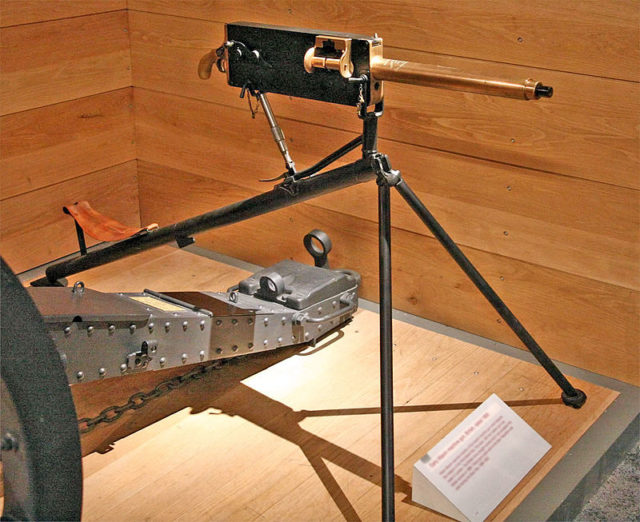
Basically, these countries bought very expensive pieces of metal that sank or were retired without seeing a single day of action. When the Turks tested their submarine and tried to launch a torpedo, it capsized and sank.
Another of Zaharoff’s devious businesses involves Hiram Maxim, the inventor the Maxim automatic machine gun. This deadly device was a huge advance in military technology, an improvement of the hand-cranked models. Maxim’s machine gun was way better than the Nordenfelt products, and this was bad for business. Zaharoff set a cunning plan into motion. Between 1886 and 1888, both Maxim and Nordenfelt participated in three public demonstrations of their machine guns. Maxim’s pitch was sabotaged in all three cases. On the first demonstration in La Spezia, Italy, Maxim’s men didn’t show up. Somebody had taken them out the night before and got them really drunk. On the second occasion, in Vienna, Maxim’s machine gun started to work improperly after firing only a few hundred rounds, and then it stopped. Later, Maxim inspected it and discovered that it was sabotaged. During the third demonstration, which also happened in Vienna, somebody informed all of the important military people present that Maxim wasn’t capable of producing the large number of machine guns needed for the army, because his complicated weapon could only be made by hand.
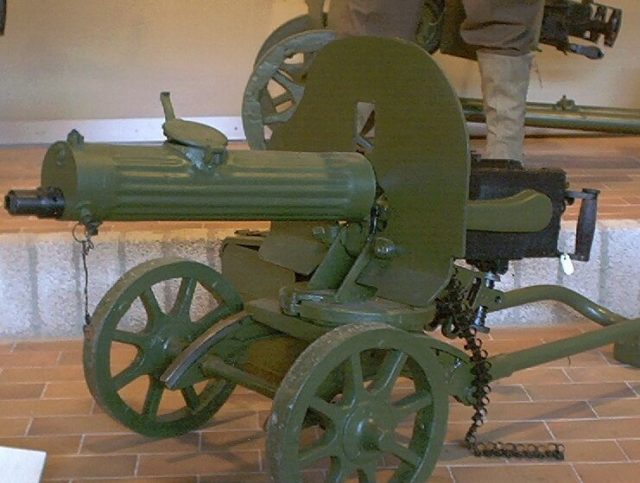
Maxim was desperate. He possessed a perfectly fine weapon and wasn’t able to sell it. This is why he decided to merge with Nordenfelt, and in 1888 the Maxim Nordenfelt Guns and Ammunition Company was born. It was a significant improvement for Nordenfelt. And Zaharoff, as the main salesman of the new company, received a huge commission for his efforts. But this is not where his thirst for money stopped. Basil continued with his highly immoral tactics and made dozens of notorious arms deals with many countries. In the meantime, he kept buying shares in his company, eventually putting Nordenfelt out of business and becoming Maxim’s equal share partner.
In 1897, the success of the Maxim company caught the eye of Vickers, then the leader of the weapons industry. Vickers bought Maxim’s company, and he and Zaharoff received a huge wealth and shares. Maxim retired, but by 1911, the enthusiastic Zaharoff had become a member of the Vickers’ board of directors. He was thus positioned as the world prepared to enter the biggest armed conflict, World War I, the first “modern” war. Before the war, at the beginning of the 1900s, each of the main European powers felt the need to modernize its armies. Vickers, guided by Zaharoff’s ideas, was ready to sell weapons to all of them. They sold weapons and armaments to Germany, to the United Kingdom, and even to Russia despite its early isolationist politics. Zaharoff, through Vickers, fueled the war.

Even in his old age, Zaharof never stopped working and scheming. During his lustrous career as a war profiteer, he managed to gain a huge wealth even by today’s standards. He was the richest man in Europe, owning three beautiful mansions, and he hid his terrible dealings from public scrutiny.
One night in 1927, Basil went through all his papers and diaries and burned everything that would incriminate him in any way. A few years later he died, but the traces he left are enough to put him close to the center of many of the terrible events at the end of the 19th and the beginning of the 20th century.
